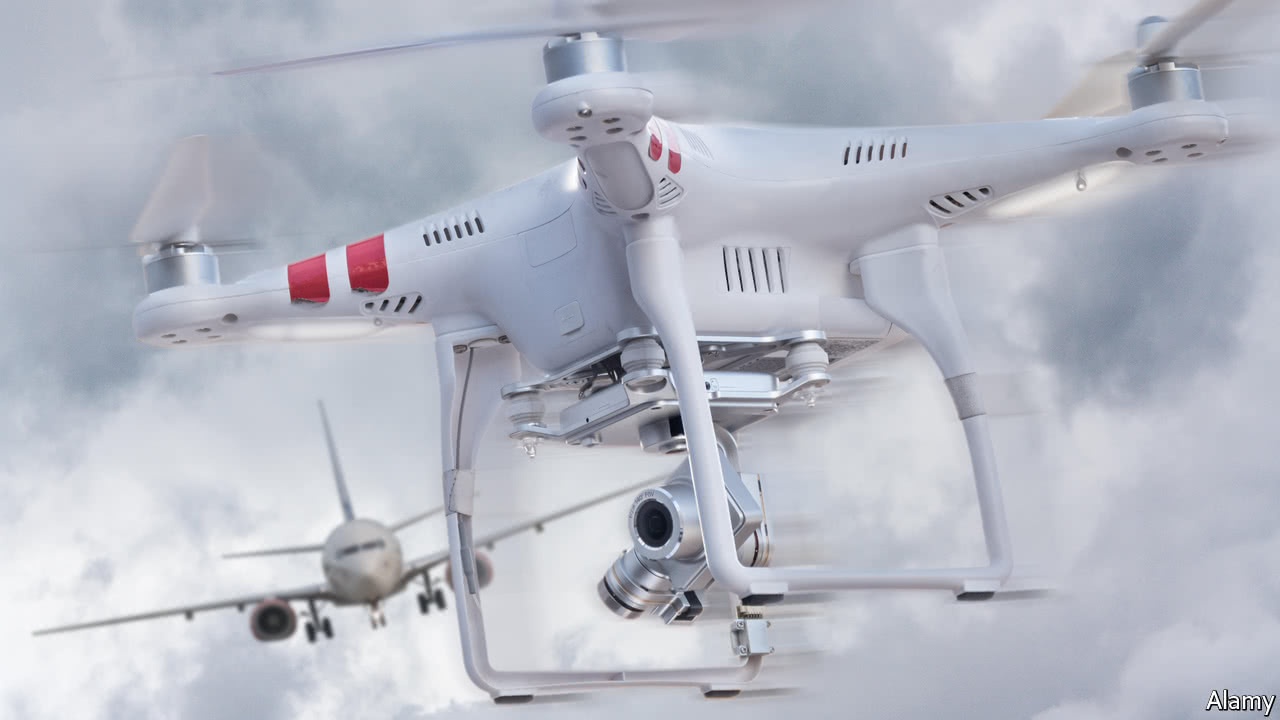
THE “Miracle on the Hudson”—the successful ditching of a US Airways jetliner into New York’s Hudson River in 2009 after it hit a flock of geese—taught frequent flyers two things. First, it really is possible to land an aircraft on water, just as is shown on seat-back safety cards. Second, and more worryingly, the incident showed how dangerous birds can be to aircraft, particularly when they get sucked into engines. The machines are supposed to be designed to withstand an impact by the feathered creatures. Using big guns, chickens have been fired at aircraft engines in safety tests since the 1950s. But what about drones?
-
Donald Trump tells leaders in Davos that America is open for business
-
Why drones could pose a greater risk to aircraft than birds
-
Being religious does not make you greener
-
Why tennis players grunt
-
Why Donald Trump has become a pro-life crusader
-
Some hotels charge visitors for bad reviews
New research suggests that small unmanned aerial vehicles (UAVs) can actually be much more damaging than birds at the same impact speed, even if they are a similar weight. The study, published by the Alliance for System Safety of UAS through Research Excellence, a think-tank, used computer simulations to examine the impact of bird and UAV collisions in more than 180 scenarios. The researchers found that the drones’ rigid and dense materials—such as metal, plastic and lithium batteries—can put aeroplanes at much greater risk than a bird carcass. Kiran D’Souza, one of the authors, says that in every collision scenario with a drone there was at least minor damage to the plane and sometimes it was much more severe. In one case, the researchers discovered that if a drone were to hit an aircraft’s fan blades when it is operating at its highest speed, the blades could shatter and power to the engine be lost.
These findings paint a grim picture given that in the past two years the number of drone sightings by pilots has surged. According to the Federal Aviation Administration (FAA), there are around 100 cases each month of drones potentially endangering an aircraft, and two collisions have already happened in North America. In September a drone collided with a helicopter near Staten Island in New York, and the following month an aircraft was struck by a drone in Québec City. Both aircraft landed safely, but given the regulations in place, neither UAV should have been flying in the first place. In America drones are required to stay in sight of their pilot, which was not the case with the helicopter collision. They also must fly at or below 400 feet and yield to manned aircraft. In Canada UAVs are not allowed to operate above 300 feet, and airports, helipads and seaplane bases are considered “No Drone Zones”. Europe has also seen at least three aircraft collisions with drones since 2010, and has been conducting research to examine the dangers.
With so many drone-owners flouting the rules, some experts think that it is just luck that has meant a serious collision has not yet happened. America’s FAA says it is working to build on the new research to create more regulations that could decrease further the risks drones pose to planes. New safety standards for engines may have to be brought in to make them more resistant to impacts with the flying contraptions. But existing regulations on where drones can and cannot fly should be more strictly policed. The regulator is also looking to the UAV makers and users to develop detect-and-avoid technology to prevent these collisions. Given the millions of travellers that take to the sky each day, efforts to keep them safe will surely have to come from both sides.
Source: economist
Why drones could pose a greater risk to aircraft than birds